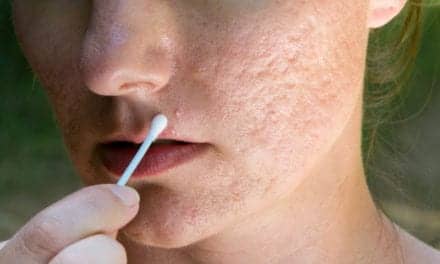A nationwide phase II clinical trial, coordinated out of Tufts Medical Center in Boston, has found that a topical cream was extremely effective in reversing the effects of vitiligo, a relatively common autoimmune disease that causes loss of skin pigmentation.
Topical application of the medicated cream, ruxolitinib, which is currently used as an oral treatment for certain blood disorders, resulted in substantial improvement of facial vitiligo symptoms in nearly half of the trial’s participants.
Results of the clinical trial were presented by David Rosmarin, MD, dermatologist at Tufts Medical Center and Primary Investigator for the study, recently at the World Congress of Dermatology in Milan, Italy, according to a media release from Tufts Medical Center.
There is no known cause of vitiligo, a disease in which the immune system attacks pigment cells in the body. Vitiligo may range from mild to severe and can be found anywhere on the body, although it typically affects exposed areas, such as the face and hands.
While vitiligo is not evident at birth, about half of vitiligo patients contract the disease before age 20. Approximately 50 million people — one percent of the worldwide population — are affected by vitiligo, including musical artist Michael Jackson, actor Jon Hamm, model Winnie Harlow, and comedian Steve Martin.
Vitiligo affects all ethnic groups equally, but is more evident in ethnic minorities with darker skin. No FDA-approved re-pigmenting treatments for vitiligo currently exist, per the release.
“Unfortunately, there is often a social stigma associated with vitiligo, and it can take a significant psychosocial toll on patients,” Rosmarin says. “Current treatments such as phototherapy, topical corticosteroids, and calcineurin inhibitors have limited efficacy, and phototherapy treatment can be a burden for patients to have to use a light box two or three times per week.”
The two-year study enrolled 157 patients at 30 sites across the United States. Participants received daily or twice daily topical application of either ruxolitinib or placebo to the area of skin affected by vitiligo. About half of the highest dose of ruxolitinib patients saw a statistically significant improvement of near 50% in their facial vitiligo, compared to 3% who saw this level of improvement in the placebo group. Side effects of topical application of ruxolitinib were mild and included redness and irritation at the application site and mild acne.
“Topical ruxolitinib has the potential to change the way vitiligo is treated. Not only is it effective at repigmenting the skin, but it has an excellent safety profile,” Rosmarin adds, in the release.
“We also are optimistic that many vitiligo patients may see an even better response with continuous ruxolitinib usage over an extended period of time, combined with phototherapy and sunlight exposure. Our hope is that this treatment ultimately will be a game-changer for the millions of people worldwide affected by vitiligo.”
[Source(s): Tufts Medical Center, EurekAlert]




